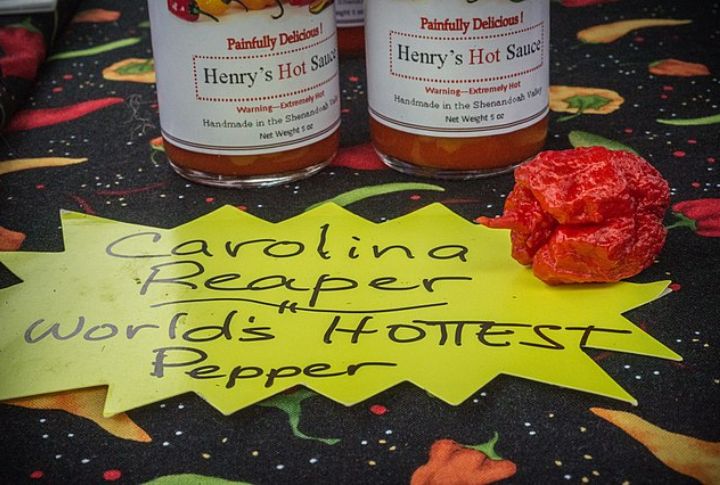
Scoville heat units (SHUs) determine just how much pepper will make you sweat, cry, or question your life choices—or all of the above. Some peppers bring the heat in a friendly way, but the 20 on this list? They don’t mess around. If you’re curious about the world’s most intense spice bombs, buckle up; it’s going to be a scorching ride.
Dragon’s Breath: 2,480,000 SHU
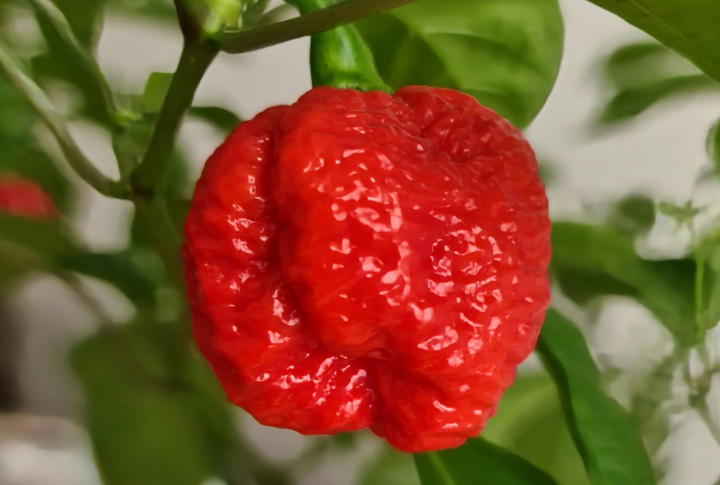
Bred in Wales for medicinal purposes, the Dragon’s Breath pepper is one of the hottest in the world. It is known for having an estimated 2,480,000 SHU. No other pepper breed is close to this number! Its extreme heat is so potent that consuming it directly can be lethal.
Carolina Reaper: 1,600,000 SHU
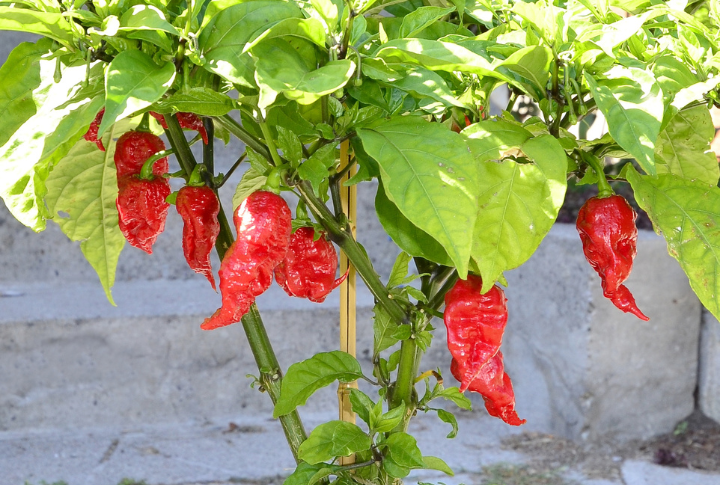
It’s the hottest naturally occurring pepper in the world. A South Carolina resident named Ed Currie created it as a hybrid chili pepper. It’s red and bumpy and looks like no pepper you want to eat, which you probably don’t, considering it’s approximately 200 times as spicy and hot as everyone’s favorite jalapeno pepper.
Komodo Dragon: 1,400,000 SHU
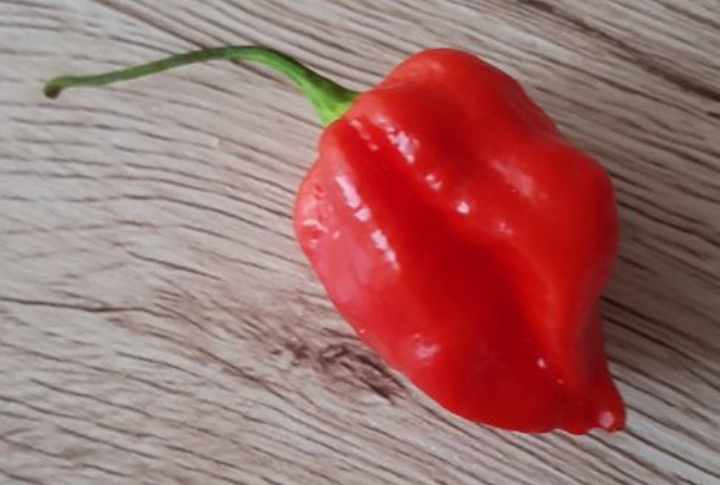
This British hybrid is named after the fearsome Komodo dragon. Known for its intense heat, it reaches up to 1,400,000 SHU and is a top contender in the world of extremely hot peppers. Handling it requires caution, as the heat can be overwhelming.
7 Pot Brain Strain: 1,350,000 SHU
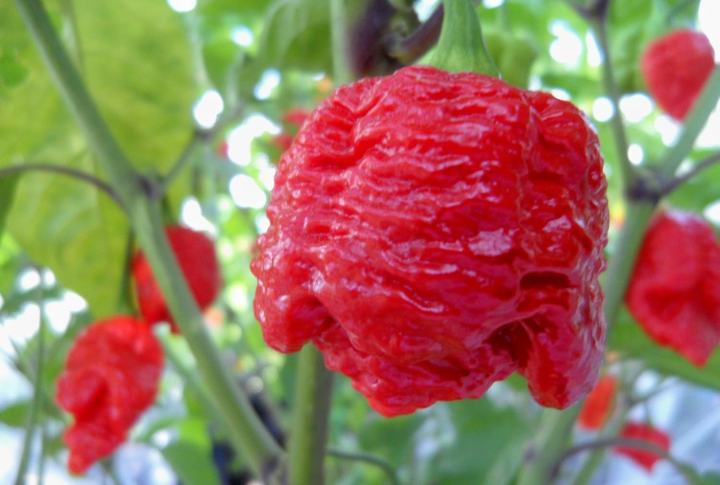
With its distinctive, brain-like shape, the 7 Pot Brain Strain delivers a fiery punch, reaching up to 1,350,000 SHU. Known for its intense heat, it’s a pepper that demands caution when handling, making it a serious contender in the world of super-hot peppers.
Naga Viper: 1,382,118 SHU
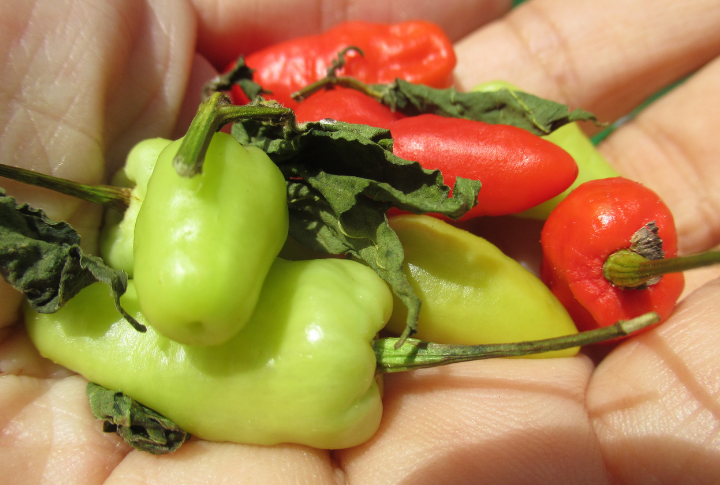
Gerald Fowler, a pepper enthusiast from England, took the hottest varieties he could find and combined their seeds to create this blazing hybrid. The result? A pepper that makes a jalapeno seem like a child’s play. It’s over 400 times hotter and not for the faint of heart. Viper’s right in the name.
Trinidad Moruga Scorpion: 1,200,000 SHU
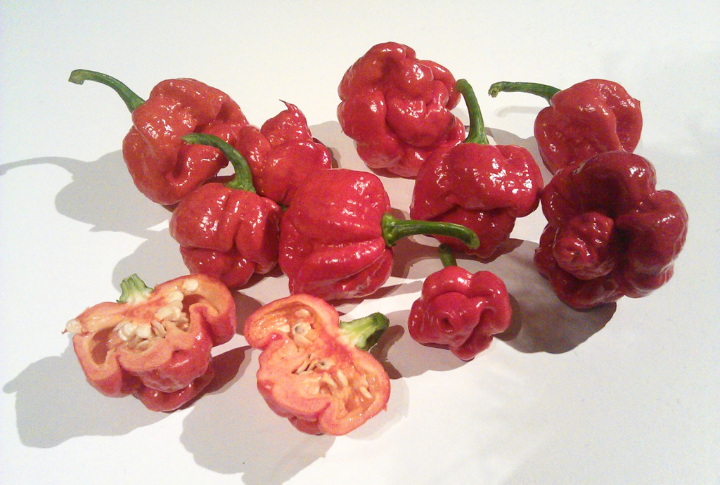
Born in Trinidad and Tobago, the Trinidad Moruga Scorpion doesn’t just burn when you eat—it lingers. With 1,200,000 SHU, the heat keeps building long after the first bite. Fruity at first, fiery soon after, and unforgettable all the way through.
Infinity Chili: 1,067,286 SHU
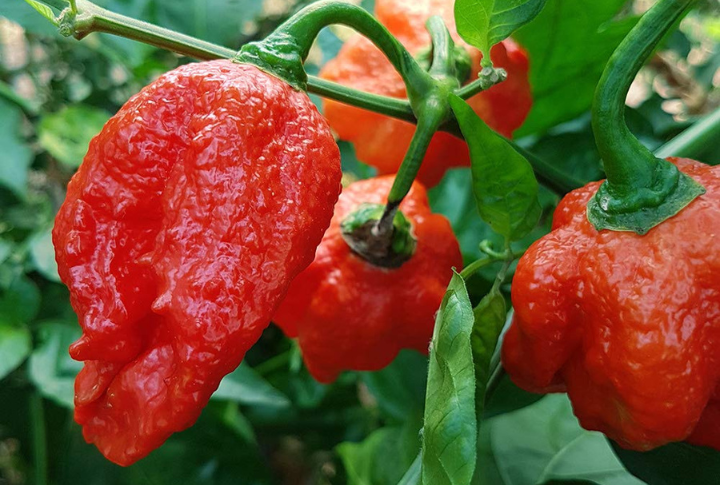
One of the few peppers that can make a kitchen feel like a hazard zone, the Infinity Chili has a heat level of 1,067,286 SHU. Even touching it without gloves is a mistake. The fumes are intense enough to sting your face. Nick Woods developed this spicy beast in England.
Bhut Jolokia: 1,000,000 SHU
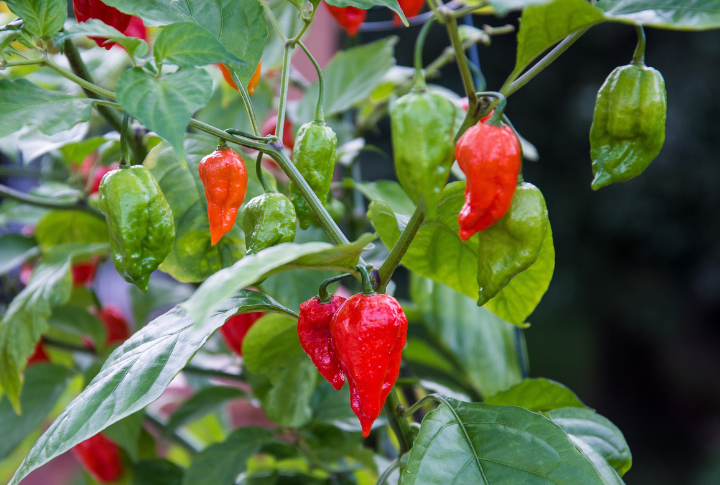
The Ghost Pepper, or Bhut Jolokia, once reigned as the king of spice in 2007. Measuring over 400 times hotter than Tabasco sauce, the three-inch orange pods hide an intense, lingering burn. Grown in India, it remains one of the most legendary peppers on the planet.
Habanero: 350,000 SHU
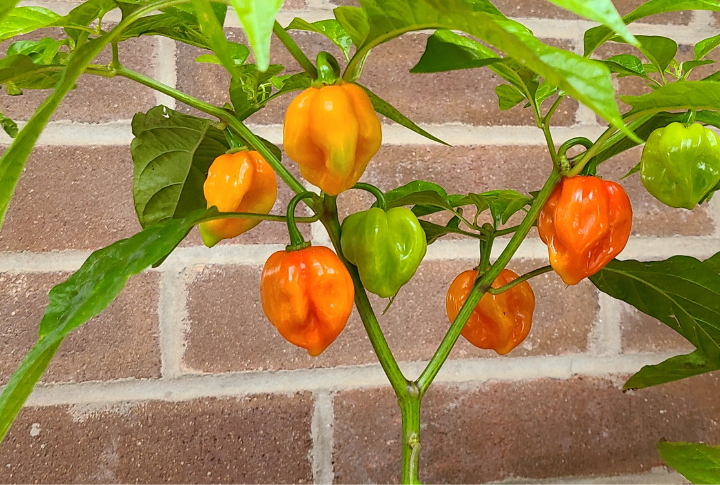
Everyone loves a habanero pepper, especially in habanero chili sauce. The orange-colored pepper is from Mexico and is one of the hottest in the world. It’s commonly used in dishes in Mexico and all across the United States.
Red Savina: 577,000 SHU
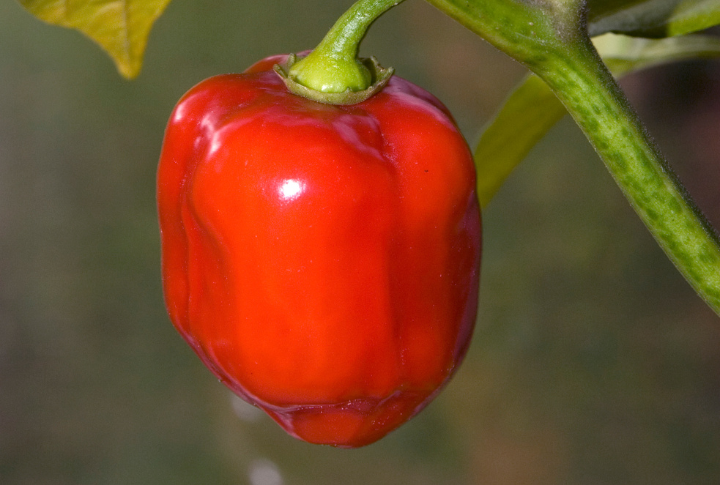
The red savina belongs to the Habanero family. However, this Californian pepper is twice as hot as the regular Habanero peppers. It can heat several pots of stew at once, so eating one is a lot like taking half of any other Habanero pepper.
Fatalii: 400,000 SHU

Packing serious heat in a small yellow pod—the Fatalii pepper reaches up to 400,000 SHU. At about two inches long, it’s another Habanero relative with an even sharper burn. Originating from Central and Southern Africa, it often finds its way into spicy, flavorful sauces.
Madame Jeanette: 350,000 SHU

It’s easy to mistake this hot pepper for a traditional yellow bell pepper. Until you take a big bite of it, that is. They are from the country Suriname. It was named the hottest pepper in the world in the 90s for several years until more spicy hybrids and new peppers came along.
Scotch Bonnet: 300,000 SHU

Loved for its fruity, slightly sweet flavor, the Scotch Bonnet delivers intense heat with a tropical twist. Popular in Caribbean and West African cuisine, it’s a key ingredient in Jamaican spice blend hot sauces and stews. Despite that fiery kick, the rich taste is a favorite.
Guntur: 300,000 SHU

Grown in the southeast Asia area, India, and Sri Lanka, the Guntur is a red chili. It’s a bit thin and grows to be around 1 to 1.5 inches in length. Guntur is widely used in Asian cuisine and can be found in most of your favorite Asian take-out dishes.
Datil: 300,000 SHU
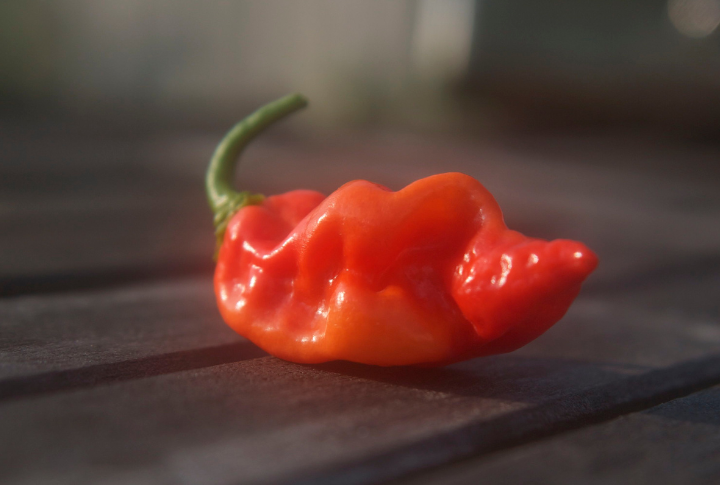
Much sweeter than a Habanero, this sweet pepper is surprisingly hot. It’s thought that this one originated somewhere in Spain and/or Chile but is cultivated primarily in Florida. Though you might not recognize the name, it’s a pepper commonly used in many native dishes in the South.
Rocoto: 250,000 SHU
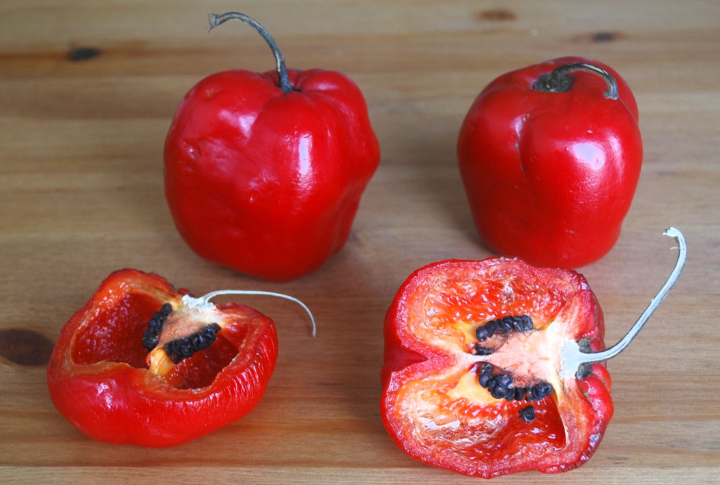
A blast of heat follows the deceptive sweetness of the Rocoto pepper. It has an appearance similar to a bell pepper or small apple and features unique black seeds and a slightly fuzzy skin. Found in Central and South America, it’s also known as locoto or capsicum pubescens.
Piri Piri: 175,000 SHU
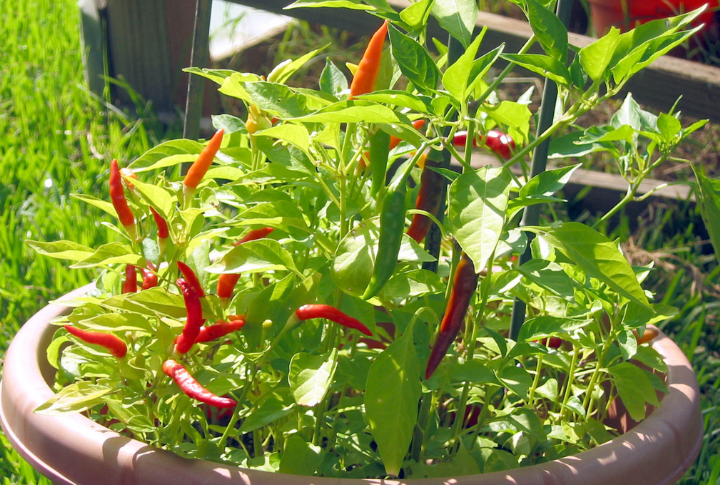
These hot peppers are found mostly around parts of Africa, such as Malawi, South Africa, Ghana, Nigeria, and Ethiopia. They look like red chilis, but they’re much hotter. They’re native to many dishes, including the kind that families make for dinner at home.
Siling Labuyo: 100,000 SHU
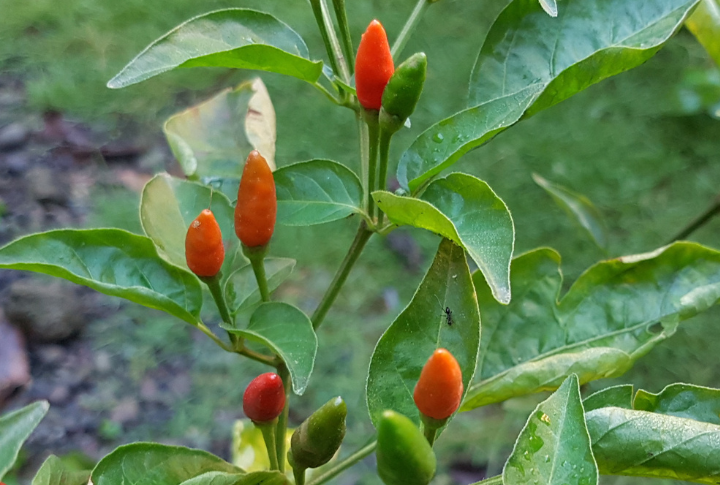
It’s named after a Tagalong word that means wild chili, and it’s found in the Philippines. These Filipino chilis are not as hot as some of the other chilis on this list, but Philippine natives would disagree. They use this pepper in special dishes such as salsas and sauces to make them extra spicy.
Chiltepin: 100,000 SHU
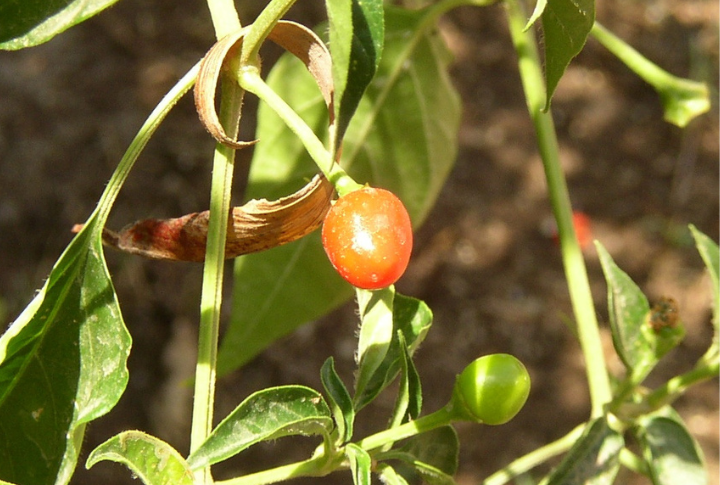
This pepper is known as a Bird’s Eye Pepper, and it’s similar to red chili even though it’s actually green. You’ll find Chiltepin more frequently in Mexican dishes than you will anywhere else in the world, though some southern cities around the Mexican border will use it more frequently than others.
Cayenne: 50,000 SHU
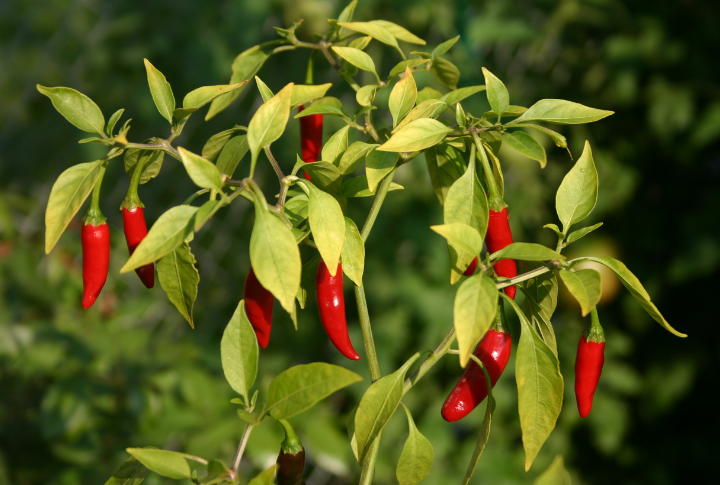
Cayenne pepper brings both heat and health benefits. It is used in herbal remedies to aid digestion and reduce inflammation. Typically ground into a spice, it’s a key ingredient in hot sauces and curries. Though native to French Guinea, it has become a global favorite in spicy dishes.
